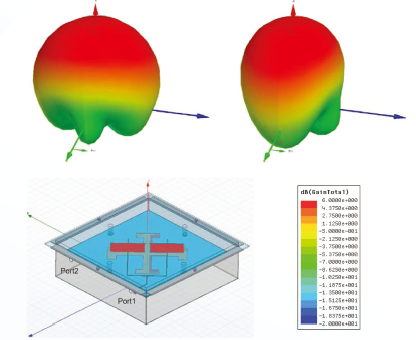

Circular Polarity RFID Panel Antenna
S9028PCLF S9028PCRF
many UHF near field antennas. Designed using proprietary software optimization tools, these
antennas provide uniform field strength across their entire aperture. There are no hot-spots or
dead-spots ensuring reliable tag reading no matter where the tag is placed on the antenna
surface. The design also is much less susceptible to detuning in the proximity of metallic objects,
or when a large number of tags are placed on the antenna for reading.
UHF NEAR FIELD ANTENNAS OFFER IMPROVED PERFORMANCE
The RFID UHF near field antennas from Laird Technologies offer improved performance over many UHF near field antennas. Designed using proprietary software optimization tools, these antennas provide uniform field strength across their entire aperture. There are no hot-spots or dead-spots ensuring reliable tag reading no matter where the tag is placed on the antenna surface. The design also is much less susceptible to detuning in the proximity of metallic objects, or when a large number of tags are placed on the antenna for reading.
Two configurations of the product are available. One is a dual port configuration that utilizes polarization diversity to provide operation in a dual mono-static mode. This antenna is ideal for use with multi-port readers. The other configuration is a single port antenna with circular polarization that can be used with either single or multi-port reader.
Each configuration is available in choice of side-entry, or bottom-entry coax feed.
Every model is available in a choice of two frequency ranges, 865-870 MHz, or 902-928 MHz.
| FEATURES | MARKETS |
|---|---|
| Circular or dual polarization versions | Retail point of sale |
| Choice of side-entry or bottom entry coax feed | Kiosks |
| Choice of 856-870 MHz or 902-928 MHz | Pharmacies |
| Choice of coax feed length and connector type | Hospitals |
| Uniform field strength across entire antenna | Incoming inspection |
| Surface | Tag writing |
| Immune to detuning in the proximity of metal | Industrial plants |



















